When, with the beginning of summer, zucchini are just beginning to appear on the beds, it seems that there is nothing tastier than vegetable circles fried in flour or batter, seasoned with salt, pepper and garlic. But gradually there are more and more of them, and the street is getting hotter and hotter. Summer is already in full swing, sometimes there is nowhere to go from zucchini, but there is also no desire to spend many hours at a hot stove at such a time. And in this situation, as well as possible, you will have a recipe for cooking zucchini in the oven, which, for its simplicity, was even called lazy zucchini caviar among the people.
Indeed, zucchini caviar in the oven will require you to have a minimal presence in the kitchen. But the dish that you get as a result will conquer you with its tenderness, the aroma of baked vegetables and impeccable taste.
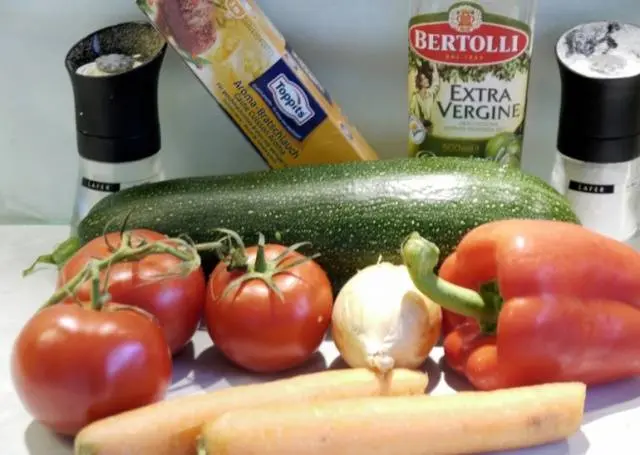
Lazy zucchini caviar
According to this recipe, caviar is made so simply that it can be cooked almost every day if there are enough vegetables. To do this, just bake everything in the oven. True, this can be done in different ways. Below are the ingredients needed to make caviar from three medium-sized zucchini.
- 2 medium carrots;
- 2 medium bell peppers;
- 1 onion of a decent size;
- 2 large tomatoes;
- 2 tablespoons sunflower oil
- Salt;
- Ground black pepper.
For the preparation of zucchini caviar according to this recipe, a baking sleeve is used.
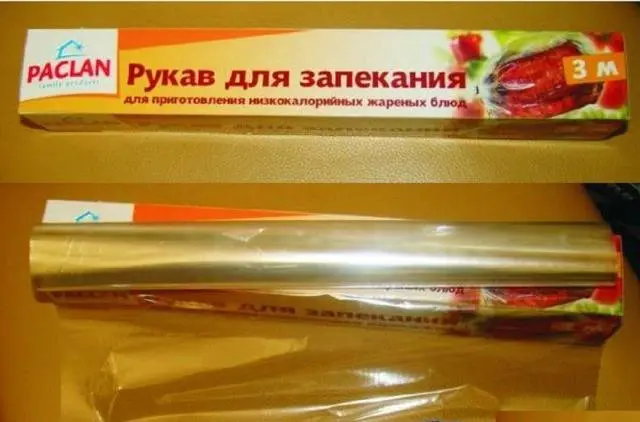
It is a package made of a special heat-resistant film that can withstand high temperatures up to +220°C and even higher. It has holes on both sides, which is why it is called a sleeve, and it is tied at both ends with a special ribbon of the same material.
Dishes that are prepared with the help of such a sleeve acquire the taste of baked and steamed products at the same time. During cooking, vegetables are soaked in secreted juices and seasonings and acquire a bright and rich taste.
Zucchini caviar in the sleeve is prepared as follows. All vegetables are thoroughly washed, dried and cleaned, if necessary, from the skin, seeds or tails. Then they must be cut into pieces of arbitrary shape and size. It is enough to cut the tomatoes into four parts, other vegetables are cut as it is convenient for you.
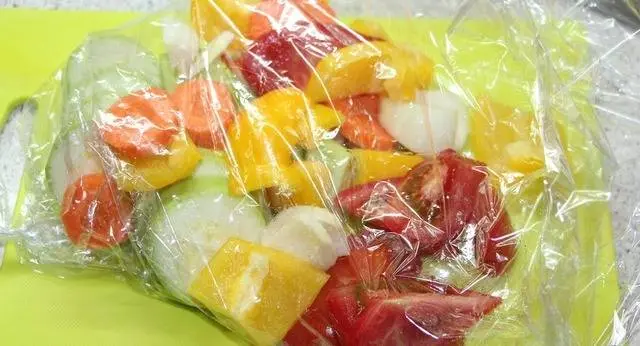
After cutting, the vegetables are carefully placed in the sleeve, already tied on one side. Then the amount of sunflower oil, salt and spices prescribed according to the recipe is poured there.
The sleeve is also tied on the other side and the vegetables in it are mixed a little from the outside. Then it is placed on a baking sheet in the oven, which is heated to a temperature of + 180 ° C for one hour. In the oven, the sleeve should be placed so that it does not touch the top and side walls, since when heated it swells and, in contact with hot metal, can be damaged.
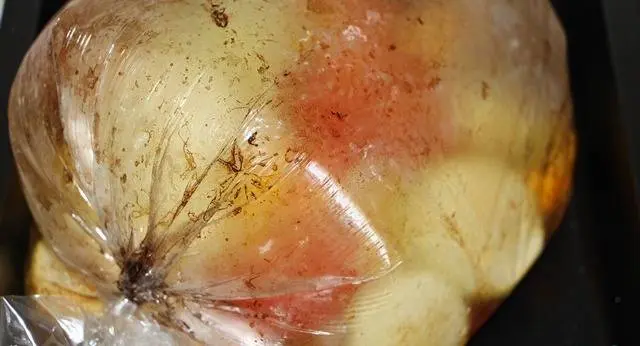
Within an hour, the oven cooks vegetables by itself, and there is no need for your presence.
After the set time has elapsed, remove the sleeve from the oven and cool it slightly so that you can fearlessly cut the film from above without getting burned.
The vegetables will float in a lot of fragrant juice, which must be drained before transferring the entire contents to the pan.
Wait for the vegetables to cool to room temperature and puree them with an immersion blender or meat grinder. Taste the finished zucchini caviar and add salt or pepper if necessary, as well as crushed garlic if you prefer spicier dishes. This dish has, perhaps, only one drawback – such caviar is not suitable for winter preparations – it must be consumed immediately, maximum stored for several days in the refrigerator.
Zucchini caviar for the winter
But what to do if you want, without suffering especially in the heat, to make blanks from zucchini for long-term storage. In this case, zucchini caviar can also be cooked in the oven, but for the winter it is made according to a slightly different recipe.
First, the following ingredients are washed and cleaned of excess components:
- Zucchini – 1000 g;
- Onions – 400 g;
- Tomatoes – 1000 g;
- Carrot -500 g;
- Sweet pepper – 300 g;
- Garlic – 5 cloves.
To them are added:
- Dill, parsley;
- Vegetable oil – 4 tablespoons;
- Salt and pepper.
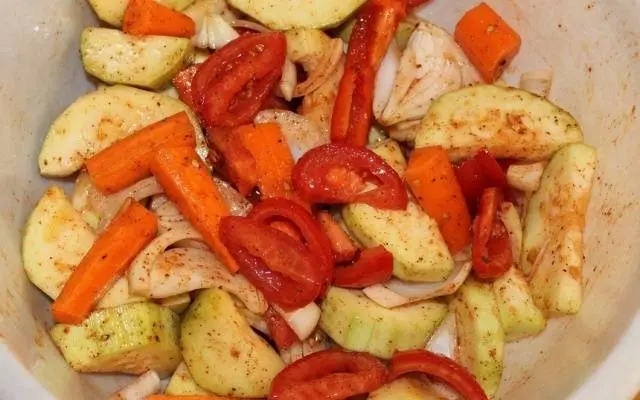
To prepare zucchini caviar, all pre-peeled vegetables are cut into oblong pieces. Then take a deep baking sheet, grease it with half the amount of oil prescribed according to the recipe and put the chopped vegetables on the bottom, following the following sequence: first onions are laid, then carrots, then zucchini, and peppers and tomatoes on top. From above, vegetables are poured with the remaining amount of oil, and all this is sent to an unheated oven. The heating temperature is set to +190+200°C.
The first half hour after the start of cooking caviar from baked vegetables, you can do other things. Then the baking sheet is taken out and the vegetables are gently mixed. Set to bake for another 40-45 minutes.
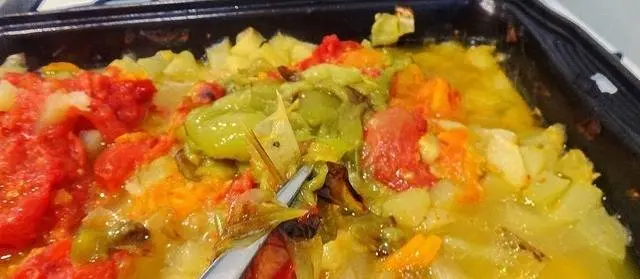
After turning off the oven and cooling, the vegetables are transferred to the pan with a slotted spoon and finely chopped herbs and garlic, as well as salt and spices, are added to them. It is at this stage that you need to take a blender and turn the entire contents of the pan into a smooth puree.
Everything is thoroughly mixed and the pan with baked vegetables is put on fire. In order for the caviar to be well stored in winter, the contents of the pan must be boiled after boiling for about 10 minutes, stirring constantly, but being careful, since the vegetable mass can “spit” with hot splashes during boiling.
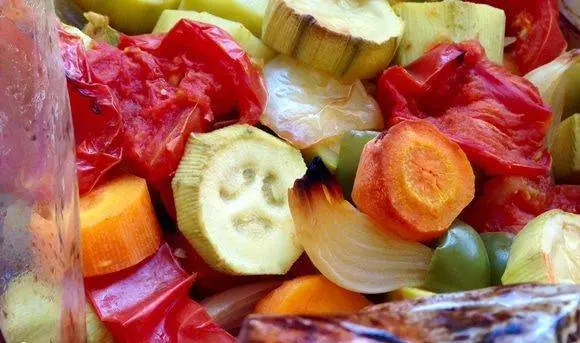
Then the finished caviar from zucchini, still hot, is laid out in freshly sterilized hot jars and rolled up with lids sterilized in boiling water. In this case, the dish prepared according to this recipe does not even require the addition of vinegar for successful storage throughout the winter period. After rolling, the jars must be turned upside down and wrapped in something warm until completely cooled during the day. This is necessary for additional sealing of canned food.
You can store such caviar even under normal room conditions, but preferably not in the light. Since it is in the dark that all the taste properties of the cooked dish are ideally preserved.









